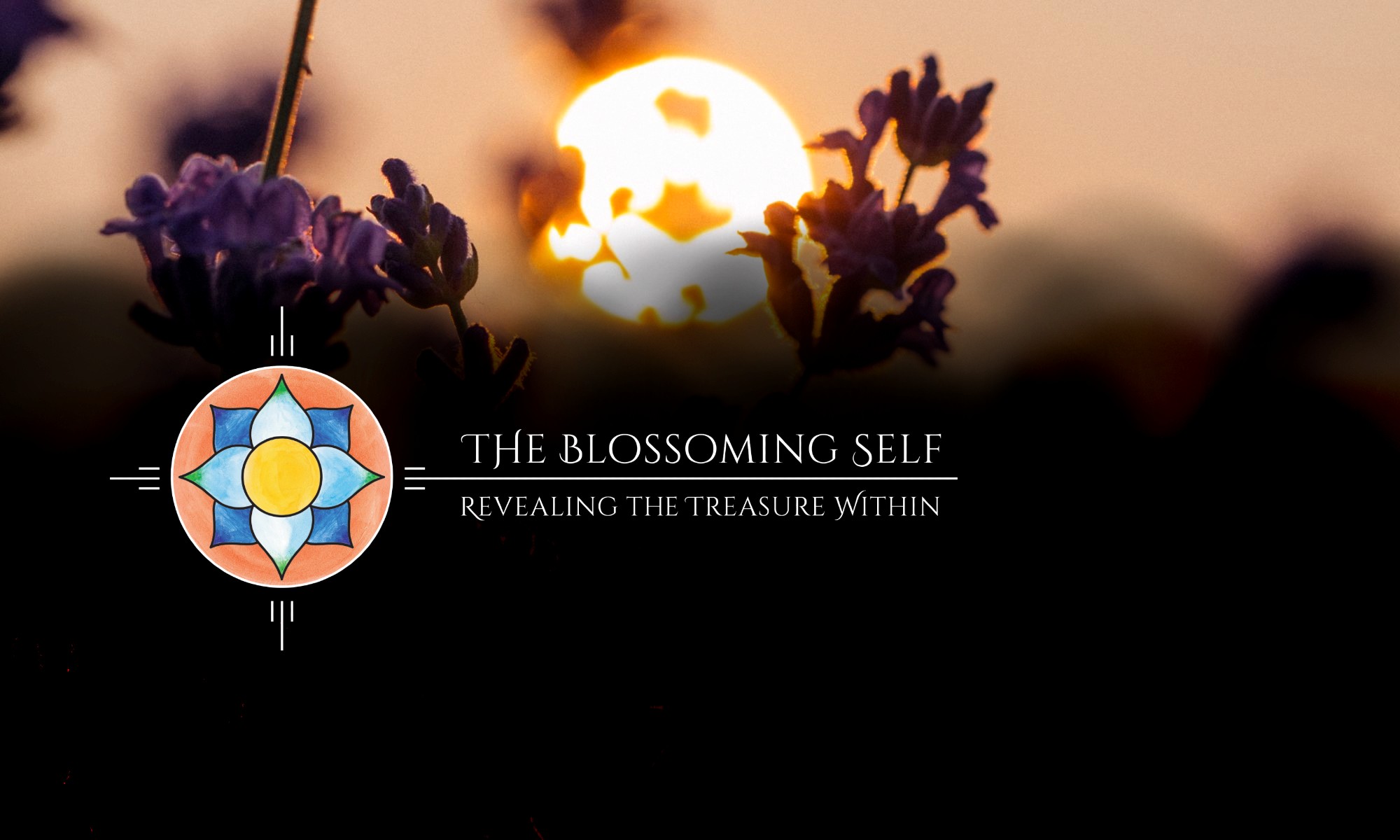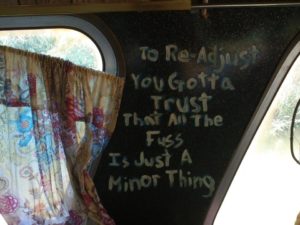Forgiveness has been a very important concept within spirituality and religion for thousands of years. It has been heralded as a liberating force, for as one learns to forgive, one is freed from the bondage of their past, and they move more graciously into the embodiment of their soul.
This being the case, we engage in many ritualistic things surrounding forgiveness – we participate in forgiveness ceremonies, cut cords, repeat forgiveness mantras and prayers, so on and so forth. As we do all these things around forgiveness, often the very things that we are trying to forgive continue to resurface in our lives. As this happens, we will commonly respond to them in the same reactionary way as we did before, thus we perpetuate the cycles that bind us to the traumas of our past. Many people do their best to apply the principle of forgiveness, in order to free themselves from this cycle, but collectively, there has been a lack of clarity as to how to effectively “forgive”.
Collectively, our consciousness has not been in tune enough with its own inner workings to grasp the deeper meaning of forgiveness. We have also not been at the proper level of maturity, because in reality, it takes a tremendous amount of personal responsibility to sincerely apply the principle of forgiveness.
As we develop spiritually, it’s imperative that we learn what forgiveness actually is on a deeper level. Forgiveness is the principle that guides the process of transformation that the soul undergoes through its human experience. This being said, as we understand what forgiveness is, and how to apply it in a direct way, we more effectively allow the blossoming of our soul to occur. We work more in harmony with higher spiritual processes that guide the course of our evolution.
So, I’m going to be outlining this process of personal transformation and how it applies to integrating forgiveness on a deeper level. There are three main phases to this process of growth. You can think of this as almost like a “map” of soul development.
For me personally, I stumbled upon these insights through a wound I that I had with regards to the masculine archetype. I was once asked to do a public talk on Father’s Day, and so I started to prepare for this talk through meditating on the archetype of “the father”. As I would meditate on this archetype, holding it in my inner vision, I began noticing these little obstructions popping up in my mind’s eye. It was similar to as if you were looking at a big beautiful painting, and then all of the sudden you notice this tiny crack in the corner of it. Before you know it, your entire awareness gets collapsed into this little crack, this little blemish. Then that tiny crack becomes the only thing that you can see.
This is what was happening to me. I decided to sit with this little “blemish” in my mind’s eye, to see what was there. And as I sat with it, I noticed some pain, some sorrow, and the very first thing that began to surface were these feelings regarding my relationship with my father. I just want to say that my father is a beautiful man, an incredibly saintly figure. I owe him my life, my everything. He is my father. The feelings of emotional pain that arose within our relationship had nothing really to do with “him” as a person, but more so the paradigm that we operated within.
In the world that my father grew up in, your sense of worth and value as a “man” was predominantly based off of your ability to provide for your family. My father took this idea of what a “good man” was, and he gave it his everything. He would work 50, 60, 70 hours a week. He worked his ass off to provide. But in spite of his incredibly pure and heartfelt intentions, I could not help but notice this incredible gap, this distance, between us. As a child, and as an adolescent, I could not help but notice this intense yearning that I had for a deeper emotional bond and connection with him.
This eventually led me to think about the relationship between the masculine and the feminine. This brought me to reflect upon my past relationships with women. I noticed that just about every single woman that I had ever been with, has been working through some form physical or emotional trauma with regards to their relationship with the masculine archetype.
This led me to feel more deeply into the collective, and I began recalling the plethora of sexual abuse and derogatory behavior that men have enacted towards woman for thousands of years. I also began reflecting on our political system, composed mostly of men, who send younger men off to war to be killed, when these older men should be their mentors and their guides. The distance, the emotional neglect, and the lack of trust is huge between older and younger men within our culture.
This made me realize that if we are to truly honor and love “the father” in a genuine way, then there is a very deep process of forgiveness that most of us are needing to go through. There is a wound here for almost all of us, in some form or fashion.
It is imperative that we not turn away from our pain, but rather go into the wound and shed light on what is there. For instance, if someone is needing to heal through a very deep childhood trauma, and they are disassociating from it and solely focusing on positive thoughts, then they will not completely free themselves from the cycle of reenactment. It may serve as one phase of growth for them, but eventually they are going to need to gather the strength and the courage to go back into that wound in order to reclaim the sense of self that they felt that they had lost.
We can understand the wound as a gateway to our highest expression, once we are willing to shed light upon it. In this, the wound comes sacred, because within it there is a code, a formula, a process, for transformation. This process of transformation is intrinsically connected to integrating the principle of forgiveness. Like I mentioned, there are three distinct phases to this process.
As most of you know the soul comes here with a certain set of gifts and talents that it’s meant to share with the world. It also takes on a certain set of inner challenges, struggles, or “wounds” that it must work through over the course of its life here. And so the process of transformation is governed by the relationship of these two polarizing aspects within the individual (one’s gifts and one’s wounds). Over the course of one’s development, these two polarizing forces slowly get brought closer together, and eventually they become integrated into one cohesive expression. The things that you have struggled with more than anything eventually become integrated into the expression of your greatest gifts. Your inner wounds play an integral role in the revealing of your innermost genius. In other words, your weaknesses eventually become your strengths.
There are three distinct phases to this process. Each phase is dictated by how one relates to their inner struggles.
Phase 1:
Disassociation – You feel powerless to your inner struggles.
In Phase 1, you feel completely powerless to your inner struggles. You feel helpless to confronting them in a healthy and constructive way. In your feelings of helplessness, you end up participating in dissociative behaviors, as an unconscious attempt to separate yourself from your inner struggles as much as you possibly can. You end up creating distractions, addictions, projections onto other people, and you end up blaming the external world for how you feel. So basically, there is a negation of personal responsibility.
This negation of responsibility is not out of malice intention. It is simply arising out of your feelings of inadequacy in relation to addressing your wounds in a healthy way. In other words, you simply feel powerless, and you must learn to work through your feelings of powerlessness in order to free yourself from the unhealthy dynamics that you have created.
It is important to realize that there is nothing wrong with this phase, it is just the first phase of maturity in this process. Nobody stays in this phase forever. Life eventually initiates you out of it (whether it be this lifetime, or one hereafter).
The role that your inner challenges take on in Phase 1, is like that of an inner monster that sort of taunts you from the inside out.
Eventually, life will push this you into a situation where you realize that your dissociative tendencies will not work for you in the long run. So, you will have an internal awakening, and this internal awakening leads you to Phase 2.
Phase 2:
Apprenticeship – Your inner struggles become a source of self-knowledge.
In Phase 2, you become an apprentice to your inner struggles. So there is a shift in relationship that occurs in how you relate to your wounds. Rather than it being this monster that tortures you from the inside out, it becomes a teacher, a guru, a guide. You learn from your wounds, you study them, you open up communication with them and they become a source of self-knowledge
Phase 2 generally comes about when you go through a crisis period in you life. A “crisis” is like life’s way of trying to get you to address your own needs in a deeper way. It is life’s way of getting you to take care of yourself on a very raw and genuine level, in a way that you probably never did before. So Phase 2, is essentially the phase when you become initiated on to your healing path. After spending a certain amount of time developing in your healing path, you progress to Phase 3.
Phase 3:
Integration – Your inner struggles become integrated as a part of your gifts to the world.
In Phase 3, there is another shift and how you relate to your inner struggles. Rather than being this guide, or this Guru, that sits sort of removed from yourself, they get brought completely into you. They become fully accepted and embraced as a valuable an integral aspect of your experience. They begin to become utilized as a source of self empowerment, as a vehicle for the expression of your gifts, and a means of service unto others.
We will go through each three of these phases multiple times over the course of our development, with regards to many different themes that we are exploring within ourselves. We have to remember our healing doesn’t occur in a straight linear way. It occurs within cycles within cycles, kind of like a Fibonacci spiral.
You may be asking yourself the question, what does this have to do with forgiveness?
This is the process through which we integrate forgiveness on an emotional and experiential level.
When we are talking about genuine forgiveness, we are not actually talking about forgiving anything outside of ourselves. If we’re ever talking about forgiveness with regards to something or someone outside of ourselves, then that is a very shallow and superficial idea of forgiveness.
What forgiveness actually is, is learning how to relate to our painful experiences, and our inner challenges, in a constructive, self-empowering, and self-loving way. It is about coming into a right relationship with our “painful experiences”, and being able to relate to them from a place of unconditional love. It is about your relationship with yourself and your experiences, and it ultimately has very little to do with your relationship with anything outside of you.
Let’s say that someone has wronged me, and so there’s a wound that is active in me, and I am trying to forgive this person. I will not be able to actually forgive them if the wound is still alive in me, no matter how hard I try. So I have to relate to that wound, to that painful experience, in a new way. I must relate to it in a more constructive and self empowering way. And once I integrate that new perspective in how I relate to my experience, then that negative charge between me and that person is gone. I don’t even have to try to forgive that person, because I’m already moving on with my life.
In understanding the true nature of forgiveness, we realize that our relationship with the external world is nothing more than a reflection of how we relate to ourselves. Everything we feel in relation to something outside of ourselves points to some aspect of how we relate to ourselves. With this, we deepen our understanding of the relationship between the internal and external realities. We must first address the internal in order to meet its reflection outside of us.
In my own personal experience, as I expressed earlier, a huge forgiveness lesson for me has had to do with my relationship with the masculine archetype.
One of my biggest struggles growing up, was understanding my heightened sensitivity as a male. As a little boy, I was not into competition, I was not into sports, I was not into a lot of the things that most little boys were into. I came across as sort of weak and effeminate to the people around me. My parents could see this, and I could tell that this really concerned them. Even though I could feel their concern on a subtle level, it didn’t really affect me until I hit puberty. The gender roles become very defined at this stage in life. I found myself at a terribly awkward predicament at this juncture, because I wasn’t fitting clearly into either gender category. I had a lot of difficulty relating to fellow males my own age at the time.
At that pivotal period of development, young males try to initiate themselves into their masculinity. They are a little bit more aggressive, a little bit more competitive, a little bit more rebellious, and through their display of “masculine” behavior, they develop hierarchies amongst themselves. There is an unspoken language that is being expressed amongst young males at this time.
I had no idea how to relate to any of this on any level. It was just like a completely foreign world to me. I began to feel very alienated from my own gender. Not only did I feel alienated from them, but I was viewed as the weakling, or the runt. I was kind of like at the bottom of the totem pole in the eyes of most males – the pansy, you could say. I was the soft one. I found myself in a lot of circumstances where I felt incredibly disrespected and dishonored. It was very uncomfortable.
I also had a very awkward relationship with the feminine. When I was about 15 or 16, I started to date. I was terribly insecure with myself regarding my masculinity because I was not mirroring the typical models of maleness or manhood around me at all. In fact, I was the exact opposite. This insecurity made my relationship with the feminine very awkward and uncomfortable.
This led me to see myself as being completely defective as a male. And it went deeper then that, to where I felt defective on a core identity level. So, there was this belief that was operating in me – that I was deeply flawed at the fundamental core of my being. There was something terribly wrong with me, and that God had made some atrocious mistake upon my creation. This is a belief that I’ve really had to work through, and I struggled with it for a very long time.
As I approach my late twenties, and I step more courageously into my career, I am realizing that a lot of the qualities that I once saw as weaknesses are now serving as my greatest strengths. My softness, my sensitivity, my empathy, my receptivity – all of these things are a tremendous asset to who I am as an artist, a healer, and as a messenger.
10 years ago if I would have been addressing this aspect of myself, it probably would have been 1 o’clock in the morning in my parents house, in a bathroom, with a bottle of vodka and one hand and a box of sleeping pills in the other, trying to get as far away from myself as possible, because I didn’t know how to accept who I was.
And now, 10 years later, I am addressing the exact same aspect of myself writing in this moment to you, about the process of transformation, the true meaning of forgiveness, and about our relationship with God. I relate to my inner struggles in completely different way than I did in my past. This is how I know I’ve transformed. So you can see, I’ve had to move through these three phases with regards to this particular theme.
My process of forgiveness has not been about forgiving my family perceiving me a certain way, or for forgiving the world around me for seeing me in any particular way. It wasn’t about any of this, on a deeper level.
I had to forgive myself.
I had to forgive myself for buying into the illusions of a world that was not at the level of awareness to see me for who I actually was.
I had to forgive myself for buying into the illusions of a world that mistook strength for weakness, and weakness for strength.
Forgiveness has nothing to do with forgiving anything outside of ourselves. And if we are ever trying to do this, we must remember that this is a very shallow, surface-level attempt at forgiveness.
When we can take any experience that comes up in our life and see it as a way to empower ourselves, and to connect with ourselves in a deeper way, then that is how we learn to actually integrate forgiveness.
Of course if you explain all of this to somebody that has just been through a traumatic event, they are not going to understand this in the state that they are in. That’s why there are three steps of integrating forgiveness on an emotional and experiential level. It is not enough to understand forgiveness conceptually, because it needs to be integrated emotionally. This part usually takes some time.
True forgiveness is a process of integrating the perspective that everything in our life is here to serve us and empower us on the deepest level. It is ultimately about freeing ourselves from the illusions of the world, through learning to perceive our darkest experiences through the context of a higher perspective.
Forgiveness is the liberating principle that guides us through the alchemical process of personal transformation. It is ultimately about coming into right relationship with one’s self, so that one can cultivate a right relationship with life.
In this, we learn to use every experience and relationship as a means to empower ourselves from within.
The deepest function of everything that exists in physicality, is to liberate the Spirit within it.












 something out of a fairytale. I listened to the waves and watch cloud kingdoms of grey and white move across the sky. The air was cool and misty, and the golden sun casts its rays upon the water, making the ocean dance in a dazzling display of light.
something out of a fairytale. I listened to the waves and watch cloud kingdoms of grey and white move across the sky. The air was cool and misty, and the golden sun casts its rays upon the water, making the ocean dance in a dazzling display of light. honor this voice, by extending its love and its wisdom… To give it complete freedom of expression.
honor this voice, by extending its love and its wisdom… To give it complete freedom of expression.